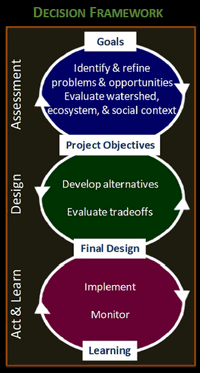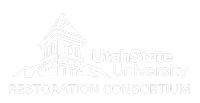Structured Decision Making
Background
Synopsis of Topic
There are many ways to make decisions, but for complicated projects with numerous, competing objectives it can be helpful to use a structured decision making process.
Relevant Learning Outcomes
 The most relevant learning outcomes for this unit is (5), but that feeds into (1) and (3).
The most relevant learning outcomes for this unit is (5), but that feeds into (1) and (3).
- Gain direct experience applying knowledge as a watershed scientist to working on real-world aquatic ecosystem restoration and management problems (e.g. stream restoration, watershed management,wetland restoration) with practitioners.
- Build a working understanding of the typical process through which restoration projects are conceived, proposed, planned, permitted and conceptually designed.
- Objectively evaluate and analyze the scientific, political, economic and feasibility tradeoffs of various approaches to restoration in a specific project context and gain an appreciation of working with diverse stakeholders. Synthesize this analysis through a planning process that prioritizes specific restoration and management actions throughout a watershed.
Resources
Slides & Handouts
Peter’s slides on Structured Decision Making:
Relevant or Cited Literature
- Corsair, H.J., Ruch, J.B., Zheng, P.Q., Hobbs, B.F. and Koonce, J.F., 2009. Multicriteria Decision Analysis of Stream Restoration: Potential and Examples. Group Decision and Negotiation, 18(4): 387-417. DOI: 10.1007/s10726-008-9148-4
- Kenney, M.A., Wilcock, P.R., Hobbs, B.F., Flores, N.E. and Martínez, D.C., 2012. Is Urban Stream Restoration Worth It? 1. JAWRA Journal of the American Water Resources Association, 48(3): 603-615.

